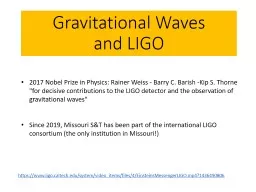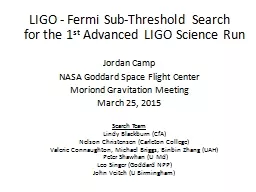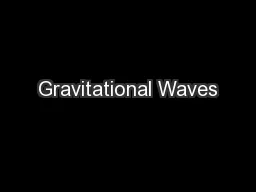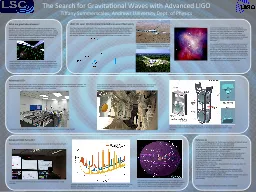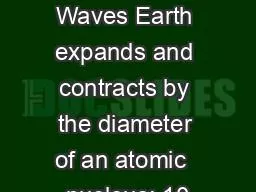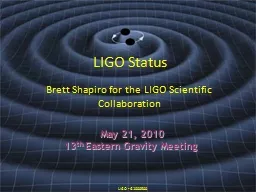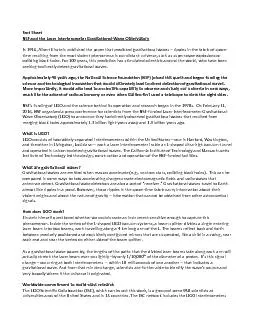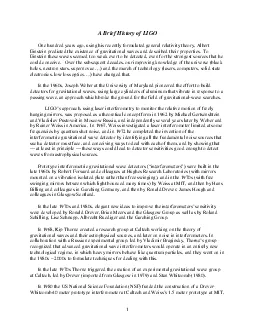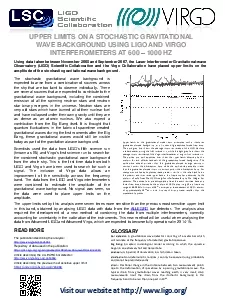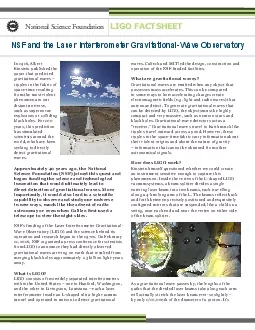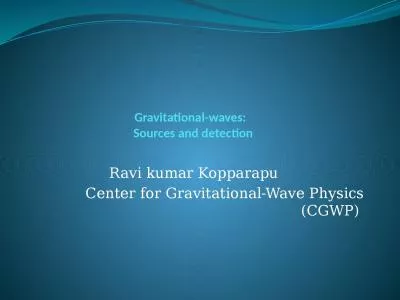PPT-Gravitational Waves and LIGO
Author : mojartd | Published Date : 2020-10-22
httpswwwligocaltechedusystemvideoitemsfiles4EinsteinsMessengerLIGOmp41436490806 2017 Nobel Prize in Physics Rainer Weiss Barry C Barish Kip S Thorne for decisive
Presentation Embed Code
Download Presentation
Download Presentation The PPT/PDF document "Gravitational Waves and LIGO" is the property of its rightful owner. Permission is granted to download and print the materials on this website for personal, non-commercial use only, and to display it on your personal computer provided you do not modify the materials and that you retain all copyright notices contained in the materials. By downloading content from our website, you accept the terms of this agreement.
Gravitational Waves and LIGO: Transcript
Download Rules Of Document
"Gravitational Waves and LIGO"The content belongs to its owner. You may download and print it for personal use, without modification, and keep all copyright notices. By downloading, you agree to these terms.
Related Documents

